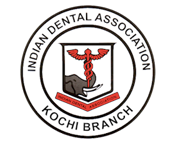 Download Full Journal
Download Full Journal
Table of contents
Original Research Article
Not AvailableReview Article
“Pandemic bruxism: An unwanted gift of COVID 19?” 
Author Name: Dr. Joshua Johnson,Dr. Achsah Rachel Johnson,Dr. Keerthy Rathan,Dr. Jesline Merly James,Dr. Suneesh Kuruvilla,Dr. Subramaniam R
Abstract: The on-going coronavirus pandemic has considerably changed all our lives and redefined what it means to be normal. The consequent lock down and social restrictions generated a sense of financial insecurity, socioeconomic distress as well as psychological disturbances among the general public. The psycho emotional turbulence kept the individuals at a constant state of agitation for longer periods, triggering the body’s natural ‘fight or flight’ response. Instead of making use of the lock down and social restrictions as an opportunity to rest and recharge, in a good proportion of people all the survival energy turned into stress, anxiety and apprehension. This accentuated levels of anxiety and emotional distress hampered general health to a remarkable extent. As pointed out by few recent studies, one of the notable oral manifestations of COVID 19 induced stress is bruxism and related temporomandibular disorders (TMDs). As a result, increased prevalence of microfractures of teeth or enamel, tooth wear, broken or chipped teeth, stiffness and pain in the jaw joint have also been reported. Management of stress related bruxism should be primarily directed to its cause. This should encompass the treatment of bruxism per se along with proper addressing of its underlying psycho emotional issues.
Keywords: COVID 19, pandemic, bruxism, temporo-mandibular disorders
Do we need Nature in Dentistry? 
Author Name: Dr. George Jacob,Dr. Deepti Paul
Abstract: In dentistry we intend to reconstruct the lost structures and restore the functions in the most natural way we can. Understanding ‘The Nature’ in Dentistry is the first step towards achieving this goal. The natural functions of the oral tissues and its development has a key role in treatment planning in dentistry. This article reviews some of the current possibilities of this concept in our routine practice of dentistry.
Managing Developing Malocclusions Through Timely Interception 
Author Name: Dr Ravisankar Vijayan
Abstract: Indentifying a developing malocclusion during mixed dentition or early permanent dentition and orthodontic intervention by the general dentist or specialist can go a long way in reducing future malocclusion. This interceptive approach will simplify later orthodontic treatment or sometimes even can eliminate future comprehensive orthodontic treatment. This article intends to give general practitioners an overview of the different developing malocclusions and basic guidelines of when to treat, what to treat and when to refer.
Keywords: Developing Malocclusion, Interception, General practitioner
‘Infodemic’- Spread, Prevention and Control
Author Name: Riya Sunil Dhas, Dr Vivek Narayan, Dr Bindu Bhaskar
Abstract: Infodemics is an overabundance of information, some accurate and some not, that makes it hard for people to find trustworthy sources and reliable guidance when they need it. As the COVID spreads havoc in the country, mis-information flows much faster than the virus from social media and other unfiltered networks, resulting in declining public faith in the health system and a perplexing sense of fear and anxiety. This review article revisits how an infodemic spreads and provides insights to prevention and management of misinformation in the context of COVID 19 pandemic.
Keywords: Infodemic, COVID-19, misinformation, prevention
Case Report
Reattachment of fractured tooth fragment with pulpotomy in immature tooth: a case report
Author Name: Dr. Leeba Varghese
Abstract: Injuries to immature permanent upper anterior teeth is fairly common in the age group of 7 to 10 years. Factors that influence the management of coronal tooth fractures include the site of fracture, size of fractured fragments, periodontal status, pulpal involvement, root maturation, biological width invasion, occlusion. Reattachment of a fragment to the fractured tooth can provide good and long lasting esthetics because the tooth's original anatomic form, color, and surface texture are maintained. Pulpotomy is considered as a treatment for immature permanent teeth with pulp exposure due to caries or trauma that gives evidence of extensive coronal pulpitis. Apexogenesis is preferred over apexification in case of injuries to immature permanent teeth.
Fabrication of attachment retained gingival prosthesis –An approach for masking anterior maxillary alveolar defect in cleft lip and palate cases.
Author Name: Dr Shashank Uniyal, Dr Vidhya Parameswaran, Dr Ankit Sharma
Abstract: Cleft lip and palate often results in impaired aesthetics due to anterior alveolar and mucosal defect. Surgical approach involving hard and soft tissue augmentation can be unpredictable with increased healing time. This article describes a technique for fabrication of fixed dental prosthesis (FDP) with detachable gingival portion as a replacement for missing hard and soft tissue defect. It facilitates oral hygiene and restores lost lip support.
Keywords: Attachment retained; Gingival prosthesis; Maxillary alveolar defect

